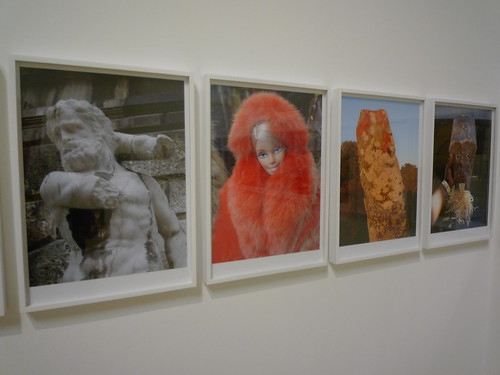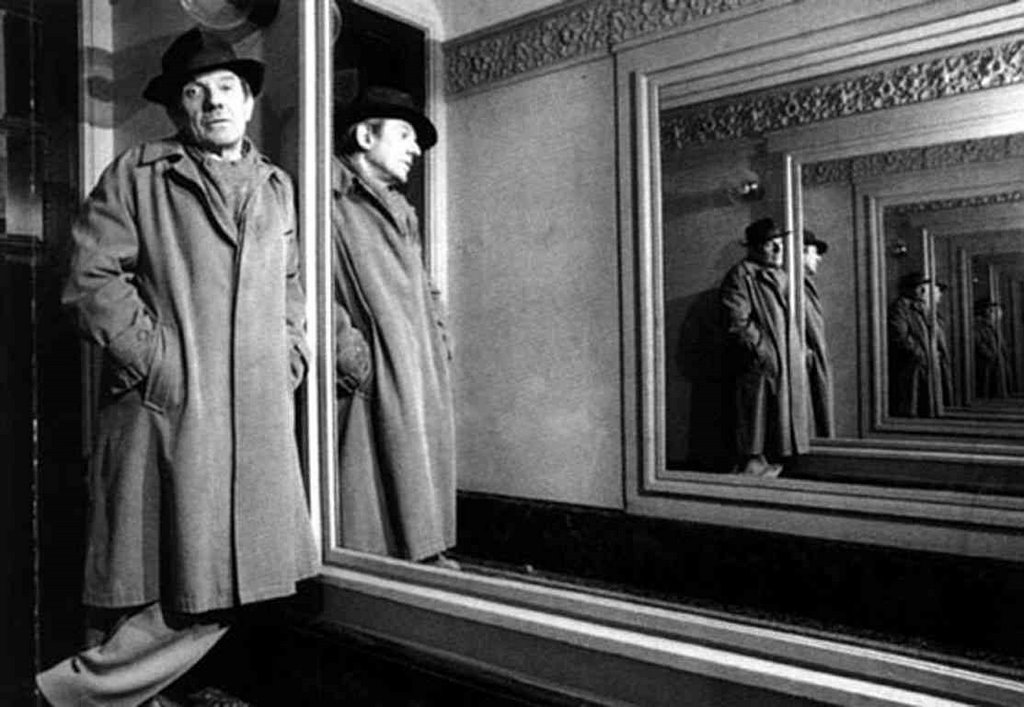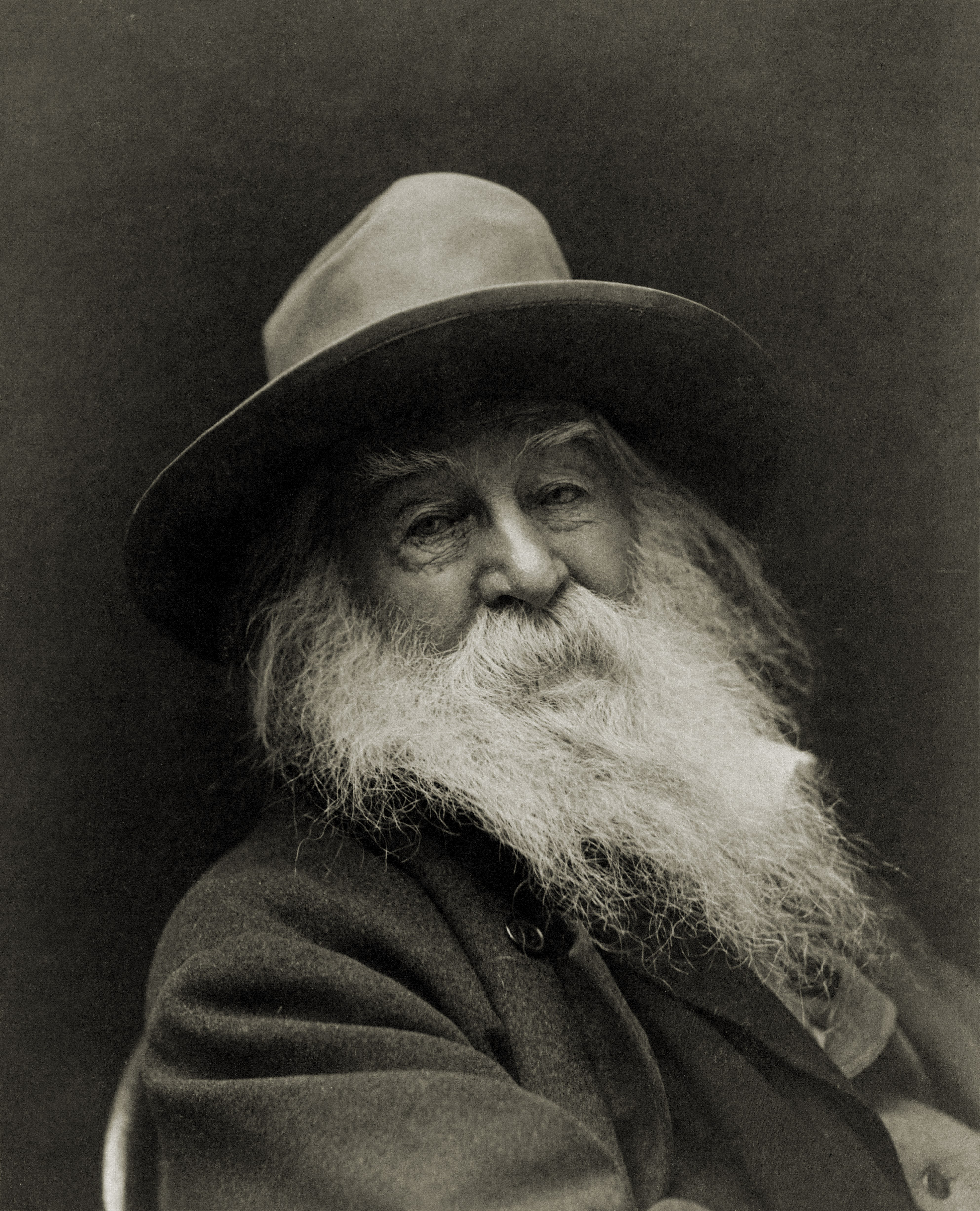I hate it when people declare something 'dead' when it's actually not.
Scratch that. I hate it when people say that an Idea is dead, period. Sure, there are dead ideas; but that's because they never were real Ideas, because they were born dead. Just like "manuscripts don't burn" - Ideas don't die. In the world of Ideas, the only things that can ever legitimately be declared 'dead' are those that never were - the many false starts, misapprehensions, misdirections in the history of human thought. Ideas do not oscillate between the living and the dead; they oscillate between the living and the stillborn. Confusion slips in when the latter go on 'living', Zombie-like, 'undead' - until centuries later some rare, clear-sighted specimen of our blundering race sees through the folly, and tells it like it is.

Sadly enough, Nicolas Bourriaud - art critic, curator, and co-founder of the Palais de Tokyo - is no such gent, and he doesn't tell it like it is. Postmodernism is not dead. It is alive and kicking, and there is nothing radically new here. Postmodernism, like every great idea, has been declared dead before - most notably after September 11, when neoliberal apparatchiks excitedly whispered that the 'age of irony' was over. In fact, Derrida's strain was even declared 'dead on arrival', years ago, before the term 'deconstruction' embedded itself in the vocabulary of art and philosophy to the point of becoming a cliche.
The thing about irony is that - like dialectics - it just never goes away. It's worse than cancer. The more you 'excise' it, the more it multiplies - the more ironic the irony gets.
When people do declare an idea to be dead, this does signal a change, but it is often not the change they are counting on - it is very often the contrary. Just when Francis Fukuyama announced the 'end of history' in the Final Age of liberal democracy, he himself soon withdrew the proclamation. Just when it looked like Global Capitalism was going to be the only game in town for good after the fabled 'fall of communism' in the 90s and the various proclamations that the 'age of ideologies' was over, the financial system collapsed and people started reading Marx again.
And just as Nicolas Bourriaud proclaimed that 'postmodernism is dead', postmodernism reared its little head all over the very exhibition that Bourriaud curated this Spring at Tate Britain to signal the death of postmodernism and the birth of what he has dubbed 'altermodern'. Isn't that, like, ironic?

I did like some of the works I saw, but I didn't find the show as a whole especially refreshing as against the contemporary art scene today. But rather than comment on the merits here, I will only address a few examples in relation to ('postmodern') theory. All quotations addressing the works and artists in the Triennial are from the exhibition guide.
Tacita Dean's work 'The Russian Ending' 2001, one of the highlights of the exhibition, is inspired by an early twentieth century custom in the Danish film industry where each film was produced in two versions: a happy one for the American market, and an alternative with a depressing or tragic ending for the Russian market. Taking images of disasters from original postcards purchased in flea markets, Dean uses handwritten notes that suggest the storyboard of a film to provide "imagined endings to imagined films."
What Dean is clearly getting at is the ambiguity of meaning in text and narrative that this reference to the Danish film tradition evokes; she inserts, for instance, coy double entendres such as 'man's laughter/manslaughter' - play, irony, reversal of signs. How is this in any sense not postmodern? Decontextualizing/recontextualizing images to imbue them with a meaning unimagined by their authors, through writing - palimpsest - and moreover suggesting "imagined endings to imagined films", is this not post-modernism par excellence? A perfect example of - whatchamacallit - deconstruction?
Similarly, Peter Coffin's work 'Untitled (Tate Britain)' 2009, projects animations with soundtracks onto existing artworks from the Tate's collection. The works "remain both in their conventional habitat and simultaneously become mobilised as fictitious characters in a new narrative scenario which...opens up a web of associations." In this way, Coffin "charges existing artworks with a life and mind of their own."
Oh, you mean that whole thing about the "death of the author" - how the 'meaning' of a work/text/utterance does not reside simply in the mind of the original speaker/author? Yep, nothing new there. Derrida again, right? And a bit of Barthes?
Rachel Harrison "splices together found objects, images, and hand-sculpted abstract forms to create installations that possess the iconoclastic energy of Punk...presents all her material on an equal footing and wilfully flattens out any cultural hierarchies." If that doesn't sound 'postmodern' enough, her work in the exhibition, 'Voyage of the Beagle, 2007', a "pantheon of fifty-eight portraits of figures and sculptures, from ancient artefacts to shop mannequins" - including a pelican, a buddha statue, a bear, an Elvis mannekin, a bear, a superman blow-up doll, all shot and framed identically and hung in a series - "functions as a sort of anti-taxonomy, mocking ideas of progression or systems of classification and otherness."

This anti-taxonomy is what Michel Foucault would refer to as a 'heterotopia' - an impossible place where all the unclassifiable junk is secluded in order to make a 'utopia' of order and reason (and taxonomy) 'possible'. Except that in The Order of Things - a work emblematic of precisely Foucault-the-poststructuralist - he goes even further. Harrison's work is just not radical or probing enough. A major inspiration for Foucault, cited in the famous introduction, was a short story by Jorge Luis Borges - a 'modern' writer (more on that below) - in which he mentions a "certain Chinese encyclopedia" which divides animals into
"(a) those that belong to the emperor; (b) embalmed ones; (c) those that are trained; (d) suckling pigs; (e) mermaids; (f) fabulous ones; (g) stray dogs; (h) those that are included in this classification; (i) those that tremble as if they were mad; (j) innumerable ones; (k) those drawn with a very fine camel's-hair brush; (l) etcetera; (m) those that have just broken the flower vase; (n) those that at a distance resemble flies."

This passage, to Foucault
"shattered thought...breaking up all the ordered surfaces and all the planes with which we are accustomed to tame the wild profusion of existing things...to disturb and threaten with collapse our age-old distinction between the Same and the Other...Moreover, it is not simply the oddity of unusual juxtapositions that we are faced with here...like the umbrella and the sewing machine on the operating table. The monstrous quality that runs through Borges's enumeration consists, on the contrary, in the fact that the common ground on which such meetings are possible has itself been destroyed...A vanishing trick that is masked or, rather, laughably indicated by our alphabetical order...What has been removed, in short, is the famous 'operating table'."
Another work, Simon Starling's 'Three White Desks', is made up of three copies of a no longer existing desk designed by Francis Bacon for Australian writer Patrick White. Only the first desk is a copy of it in fact, made by a cabinet maker after the only surviving photo. The second one, made after an identical photo of the first desk, is a copy of a copy, and is in turn photographed...you get the picture. The third desk is a "copy of a copy of a copy."

The disavowed reference is clear - Warhol only did it better, with more umph. The added dimension in Starling's 'altermodern' approach is having each copy made by a different cabinet-maker in a different country, each in a city relevant to the story of the original desk. But this unnecessary step, which makes for an 'interesting story', only obscures the key point - that repetition alone produces change, without any added input. If one artist alone makes copies of a thing, by the same method, in the same medium - after a sufficient number of repetitions the copy becomes a simulacrum. Each repetition brings about a change, however minuscule. This work, then, tells us nothing significant about 'cultural exchange' and 'translation' between cultural milieus or mediums - every copy, every repetition is a 'translation', every work - every copy in fact - a 'cultural milieu' unto itself on a microcosmic scale.
Here's Deleuze, one of the, you know, key dudes of postructuralist/postmodern philosophy, writing about Warhol circa 1968, p 366, Difference and Repetition [my italics]:
"Each art has its interrelated techniques or repetitions, the critical and revolutionary power of which may attain the highest degree and lead us from the sad repetitions of habit to the profound repetitions of memory, and then to the ultimate repetitions of death in which our freedom is played out...the manner in which, within painting, Pop Art pushed the copy, copy of the copy, etc., to that extreme point at which it reverses and becomes a simulacrum (such as Warhol's remarkable "serial" series, in which all the repetitions of habit, memory and death are conjugated)..."

I rest my case.
Reading Bourriaud's introductory text I find myself baffled - it oscillates between totally meaningless commercial art-world jargon with no apparent relationship to most of the works in the exhibition, other than what could be said of any contemporary art ("the figure of the artist as homo viator, a traveller whose passage through signs and formats reflects a contemporary experience of mobility"); and a schoolboy's highly simplified rendition of precisely postmodern philosophy, i.e. Deleuze - "lines drawn both in space and time, materializing trajectories rather than destinations, expressing a course or a wandering rather than a fixed space-time"; the term 'altermodern', he tells us, "suggests a multitude of possibilities, of alternatives to a single route."
Très chic. Yet this somehow means that the "historical period defined by postmodernism is coming to an end"? Not with these kinds of contradictions to play with.
Derrida can be read into this discussion as a kind of arch-Marxist: where Marx saw internal contradictions in capitalism, Derrida saw internal contradictions everywhere. Deconstruction is internal to things - and this is what bugs me when people throw these words around without grasping them, and write stuff like 'Artist so-and-so uses conceptual approaches to such-and-such to deconstruct notions of this-and-that with reference to narratives of something-or-other', and so forth. People don't deconstruct anything - deconstruction is a passive process, a force of nature. It can only be shown - one can only draw attention to the self-deconstruction of, say, a text. Things deconstruct themselves, break down into their constituent components, expose their own contradictions, generate their own opposites and internal differences. Language deconstructs itself through repetition. Ideas deconstruct themselves. Modernity, too, deconstructs itself; and Bourriaud's 'Altermodern' triennial is a case in point.

'Altermodern' decomposes, ironically enough, into a poor copy of 'postmodern'. And by 'poor' I don't mean artistic merit or 'faithfulness to original', but quite the contrary - poor in the sense that it falls short of its own mark, that within a history of thought, it doesn't represent a development in the way in which 'postmodernity' was a development of 'modernity'.
One of the great lessons of one of the key philosophers of modernity, Hegel, was this: something that appears to be refuted - annihilated - in the progression of thought, is merely sublated. (Aufhebung) One of Hegel's favourite metaphors was that of a flower springing from a bud, appearing to destroy the bud in the process; the flower blooms, the bud disappears. Nevertheless, without the bud there would be no flower - it is the bud that gives birth to the flower, and remains sublated within it.
Postmodernity is a moment in the history of thought - one of its key realizations as against modernity being that meaning and language are inherently unstable; that identity is unstable; that concepts themselves are unstable and their meanings shift, evolve. Even terms like 'modern' and 'postmodern' or 'poststructuralist' are themselves inherently unstable, and were rarely - if ever - self-applied by those thinkers usually corralled under them by high-minded critics concerned with fads and fashionable phrases.
We cannot simply retreat from that, abandon that moment in thought, pretend it didn't happen. In Deleuze, the dialectic exemplified in Hegel's metaphor translates into becoming. But becoming - what Bourriaud might call "trajectories rather than destinations" - encompasses more than Hegel's dialectic because Deleuze, among other things, had Darwin and evolutionary science behind him. Becoming takes account not only of a process of growth in the sense of a single living organism (even as a microcosm of world spirit), but the whole process of genetic development and actualization, which adds complexities - is more in the vein of 'rhizomatic'. It can move and split in any direction and does not follow any clear, determinable path to 'Progress' but only adaptation, neither up nor down, neither forward nor back; and it is dependent precisely on processes of repetition - the copy of a copy of a copy, etc - which over time generate the truly new in nature.

To Deleuze, the very suggestion that there is an opposition (real or apparent) between 'bud' and 'flower' as distinct identities, and that one annihilates or even appears to annihilate the other, would be false: this is the field of the negative, the 'false problem' or 'the fetish in person'. The one, rather, becomes the other, morphs into it. Together they form a 'trajectory' rather than two 'destinations' or 'points'.
In this vein, I find Bourriaud's notion of 'altermodern', at least from what I have so far seen in practice, very un-becoming.
Altermodernity hasn't come up with any truly new problems in relation to postmodernity. To use Bourriaud's own terminology, what he has missed is that the relation modern-postmodern is precisely that - a relation, in which neither is a fixed point in space/time - the two form a trajectory in which neither can be reduced to simply itself, or disengaged from the other.
Ideas - real ideas, generating real problems - don't die; and many of the pieces in the 'altermodern' exhibition demonstrate that the Idea in question here - the 'postmodern' one - is very much a real Idea, embodied in actual objects, even ones whose authors or curators claim that that same idea is 'dead'. Irony is indeed alive and well.

The thing is, writers and poets always 'got it' before art critics and historians did. Rimbaud's famous remark in a letter to a friend - Je est un autre ('I is another') - has long been mulled over as a herald of postmodernity. Jack Kerouac's "it ain't whatcha write, but the way 'atcha write it" hints at the notion of différance. Yet another great poet once wrote
Do I contradict myself? Very well then
I contradict myself.
I am large, I contain multitudes.
Now that sounds pretty damn post-modern to me. When was it written? 1855. Walt Whitman.
In the case of some writers, who stand in the margins and evade easy pinning down, such as the Portuguese Fernando Pessoa, people have debates and ask: was s/he modern or postmodern? And I say to that: does it matter? Only the Ideas matter in the end. Where 'modern' stops and 'postmodern' begins is a matter of pointless pedantry.

Walt Whitman - clearly postmodern
These writers - Foucault included - themselves embody that trajectory in thought, the discovery - the transition from 'modern' to 'postmodern'.
I am tempted to speculate here that Bourriaud may in fact have a point, however not the one he figures - that perhaps the rise of fads and buzzwords like 'altermodern' in today's global financial capitalist world does signal a new era, but one which is still postmodern, even ultrapostmodern rather than 'altermodern'. What we may be faced with here is a stripped-down version, a 'bare repetition' of postmodernity without self-awareness, or with a kind of false consciousness - a thoroughly unhinged postmodernity unaware of its own historical moorings, under a different name, a different guise. An even more postmodern postmodernity, precisely because it doesn't call itself that. (very much in line with Zizek's remark that one of the dangers of today's global capitalism is that it 'no longer calls itself capitalism.') Postmodernity, in other words, is Altermodernity's unnameable core - its Big Other - the elephant in the room.
So, there - deconstruct that.
As another modernist poet - whose words also have a distinctly post-modern/Taoist ring at times - T.S. Eliot, put it:
Is only a shell, a husk of meaning
From which the purpose breaks only when it is fulfilled
If at all. Either you had no purpose
Or the purpose is beyond the end you figured
And is altered in fulfilment.
Alternatively, one could say that just like Marx is only now, 150 years later, in the midst of a financial crisis, coming into his own; postmodern thought, too, has yet to come into its own. 'Altermodern', on the other hand, in the world of Ideas may well be of the stillborn/undead variety.
Therefore in keeping with this fashion of inventing interesting buzzwords, I have come up with my own: AlterpostpunkAnarchoMarxistModernism. Whatever straw dummy Bourriaud in his out-of-touch world takes postmodernism to be may be 'dead', but this surely ain't. This, I claim, is the true 'sign of the times'; but alas, I haven't the time to elaborate on it here.
Wednesday, 15 April 2009
Punkstmodernism is not dead: notes from behind the irony curtain
Subscribe to:
Post Comments (Atom)

No comments:
Post a Comment